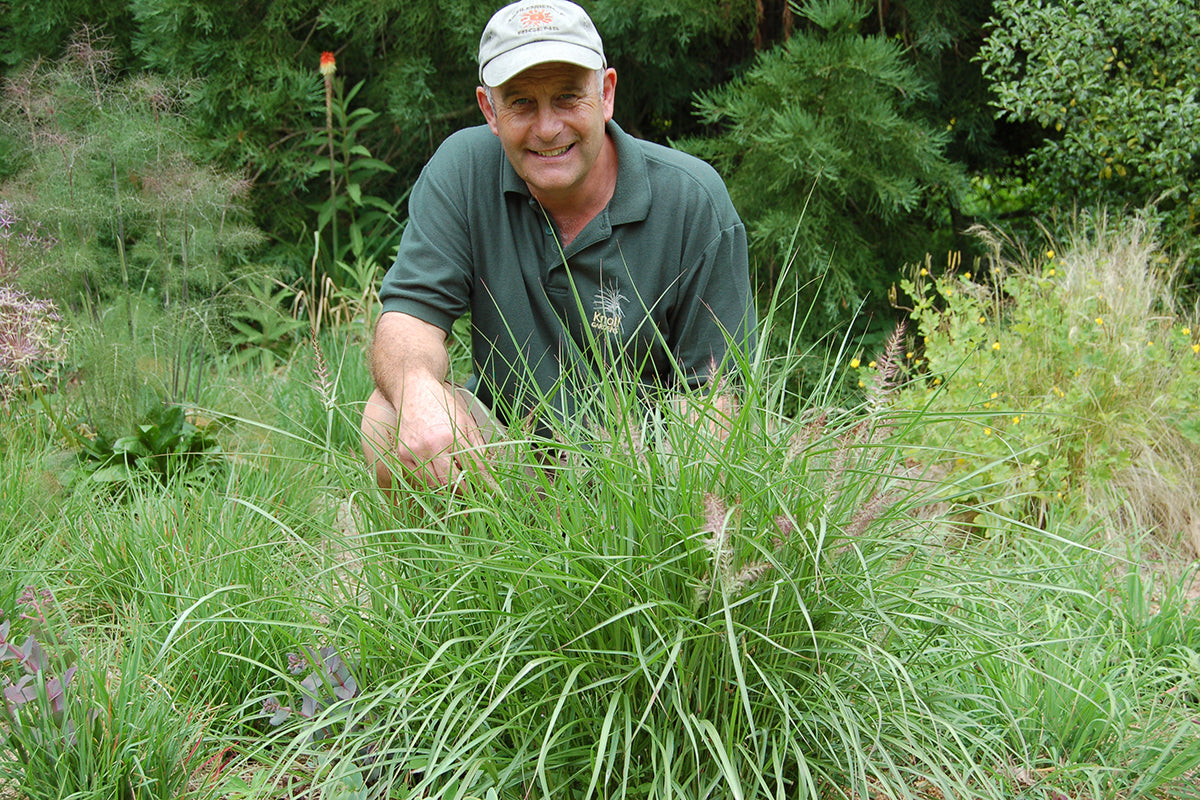Q&A with Neil Lucas, Knoll Gardens

Tell us about your route into horticulture?
I worked for the civil service before deciding I wanted to be a gardener. I helped tend the grounds of my parents’ hotels in Devon and worked for a local health trust as a gardener. When we bought the garden at Knoll I was initially interested in shrubs and trees, but my love of grasses and expertise in them grew through seeing what conditions helped them thrive - training has its place but there’s nothing like learning through practice.
What is it about grasses you love so much?
As gardeners, so many of us focus on flowers and colour, whereas grasses contribute other qualities. They are hugely important, low maintenance and useful species covering more of the earth than any other plant. They make gardens more interesting for longer, create screens, act as a lawn replacement, add naturalism and texture and knit planting together.
Do you have any fail-safe combinations of grasses and perennials?
Tall upright grasses such as Calamagrostis Karl Foerster and panicum varieties work well with tall perennials such as Verbena bonariensis, Persicaria ‘Fat Domino’, sanguisorba, echinacea and rudbeckia. Stipa gigantea and the taller achillea such as A. ‘Cloth of Gold’ are a good combination. Stipa tenuissima works well with bulbs such as alliums, perennials such as Salvia nemorosa ‘Caradonna’ and achillea. We use Poa with iris, knautia and nepeta growing through it.
What sort of conditions do grasses tend to like?
As a rule of thumb, tall, flowering ornamental grasses generally like sun and an open aspect, and small and evergreen, or foliage-based grasses such as Carex like shade. Of course, there are some exceptions such as Calamagrostis brachytricha, which copes with quite a bit of shade.
Tell us about why grasses and naturalistic planting is so good for wildlife?
Grasses encourage us to see the garden as a whole, rather than just a collection of different flowers. As well as needing flowers for pollinators, grasses provide essential cover and shelter for a host of wildlife. We regularly see gold finches feeding on dried seedheads – it’s a lovely sight when they land on stems of the miscanthus. Plants like pennisetum and seslaria act as winter cover and protection for wildlife such as field mice.
What would be your desert island picks?
Panicum ‘Sea Mist’ is a beautiful grass with sea green foliage and wonderful airy flowers in summer. Molina caerulea is a beautiful and resilient native that does well in an open, dry sunny spot but copes well with wet conditions. Pennisetum ‘Fairy Tails’ is lovely and upright but with soft flowering flowers and creates a nice informal hedge – it needs full sun.
When do you like to cut down deciduous ornamental grasses?
We start cutting back in early February, especially in areas where there are early season bulbs coming through such as daffodils and primulas. Then March is the main month to cut back. Semi evergreen grasses such as seslaria which can get a bit bedraggled we cut back to 2/3 inches. Stipa tenuissima we cut back several times a year during the growing season as the flowers get top heavy and this refreshes them










